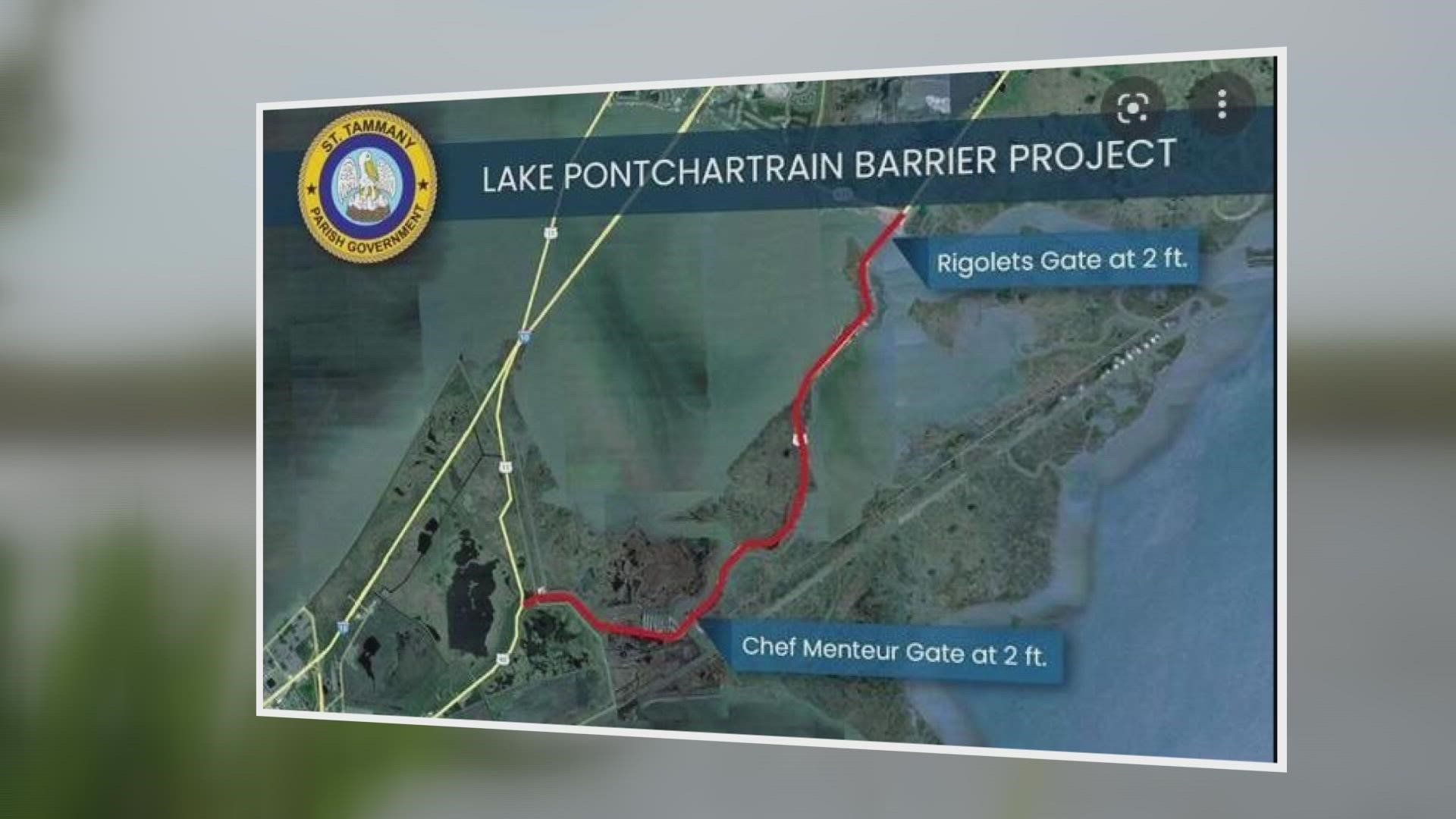ST. TAMMANY PARISH, La. — Over the last few years, there has been an enhanced push to prioritize levee protection in St. Tammany Parish. It's a parish-wide initiative, with a variety of organizations trying to make a change.
"Our goal is to come up with different levels of protection so that the community can work with us and determine what will protect them and what will enhance their quality of life. Then we can cater this plan to their area," said Suzanne Krieger a chairman of the St. Tammany Parish Levee Drainage and Conservation District.
The STLDCD was created by the state legislature in 2014. They work year-round to “…establish, construct, operate, or maintain flood control works related to hurricane protection, tidewater flooding, saltwater intrusion, and conservation.” Being from Slidell and seeing the damage hurricanes have caused throughout the years, Kreiger’s work is personal.
Kreiger said, " It is so hard to, as a community, to come back after that sort of an event. And then every single year, we live in fear that we're going to be wiped away by another hurricane."
Their latest project is now four years in the making and a major part of their Costal Master Plan.
"It started in 2014 it really took action in the last four years with a coastal master plan, and also with obtaining a federal study, it's a $3 million year three levels of administration, and that is a study to work with the Corps of Engineers and to do a federal project," Kreiger.
That plan is now being called the Lake Pontchartrain Barrier project. The roots of this plan go all the way back to Hurricane Betsy. However, the plan was never completed because there was some concern from fishermen and environmentalists, but now it's been revamped and has been given another chance. It's a project initially reintroduced by the St. Tammany Parish Coastal Protection & Restoration. While the STLDCD and the St. Tammany Parish Coastal Protection & Restoration are two different entities, they are both working towards the same goal; seeing this plan finally come to fruition.
St. Tammany Parish Coastal Protection & Restoration Manager Randall Pausina said, "we just felt like it's something that needed to be dusted off. And we need to take another look at it because this project protects everyone in the whole entire lake and all around the southeast. Regardless of social income, regardless of where you live. All of that protects everybody, you close the gate, and everybody around the lake is safe."
On the parish level, Pausina says Parish President Michael Cooper has been spearheading this initiative. The parish is also juggling $25 million worth of other coastal restoration and flood prevention projects while also preparing for the U.S. Corps of Engineers St. Tammany Feasibility Study, which is a $4 billion project. If approved the plan will improve structural protection like levees, and nonstructural protections like raising houses and waterproofing businesses.
With millions available on the federal level, Pausina said now is the time he believes the Lake Pontchartrain Barrier project will be a massive undertaking.
"It would build a levee all along that land there but also put two gates there. So, all six parishes that touch the lake will be protected," Pausina said.
However, it won't happen overnight. Right now, they have a few months left in the study. Once complete, and all parishes are on the same page about a plan of action, the study heads to congress, if approved and funding is secured, then it heads to the corps.
"So, it will probably take us a year or two to restart the project at the federal level. And once we get our money in the year, less than a year, we hope early next year, we can do the model," said Pausina. "The corps doesn't move as nimble nimbly as we would like. So, once they get restarted, the hope is that we're going to speed things up, because we're already going to have the modeling out of the way, using all the same modeling techniques or programs that they use."
As of now, it is a waiting game for a project Pausina said could cost upwards of a billion dollars.

